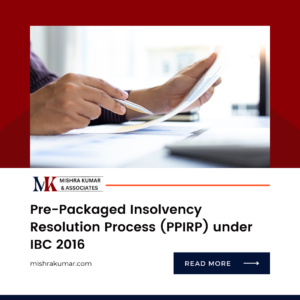Demergers
Corporate restructuring is a strategic tool that companies use to adapt to changing market conditions, improve operational efficiency, and maximize shareholder value. One of the methods employed in corporate restructuring is demerger. In this blog, we will delve into the concept of demergers, explore their intricacies, and discuss their implications for businesses.
INTRODUCTION
Corporate restructuring is a strategic tool that companies use to adapt to changing market conditions, improve operational efficiency, and maximize shareholder value. One of the methods employed in corporate restructuring is demerger. In this blog, we will delve into the concept of demergers, explore their intricacies, and discuss their implications for businesses.
ANALYSIS
Understanding Demergers
A demerger, also known as a divestiture or spin-off, is the opposite of a merger. It involves the separation of a part of a company’s business or assets into a new independent entity, essentially “demerging” it from the original company. Demergers can take several forms:
Spin-off: In a spin-off, a company separates a subsidiary or business unit into a new independent entity and distributes shares in this new company to its existing shareholders.
Equity Carve-out: An equity carve-out involves selling a portion of a subsidiary through an initial public offering (IPO) while retaining a controlling interest.
Sell-off: In a sell-off, a company divests a subsidiary or business unit by selling it to another company or entity.
Benefits of Demergers
Focus and Clarity: Demergers allow a company to streamline its operations and focus on its core business, reducing complexity.
Unlocking Value: By creating separate entities, the true value of different businesses can be realized, potentially resulting in a higher market valuation.
Risk Mitigation: Demergers can help mitigate risk by segregating businesses that operate in different industries or have distinct risk profiles.
Strategic Flexibility: Companies can adapt to changing market conditions and pursue new opportunities more effectively with a simplified structure.
Challenges of Demergers
Complexity: Demergers involve intricate financial, legal, and operational processes that require careful planning.
Tax Implications: Demergers can have tax consequences that need to be managed effectively to avoid adverse financial impacts.
Employee Transition: Separating employees, processes, and systems can be challenging, affecting morale and productivity.
Costs: Demergers often come with significant transaction costs, including legal fees and administrative expenses.
CONCLUSION
Demergers are a vital component of corporate restructuring, offering a means to optimize a company’s structure, unlock hidden value, and adapt to changing market conditions. While they present various benefits, they also pose challenges that need to be addressed through careful planning, execution, and post-demerger integration. A well-executed demerger can lead to a more focused, agile, and valuable organization.
FAQs
Q1: What is the primary objective of a demerger?
- The primary objective of a demerger is to separate a business or subsidiary from the parent company to create independent entities, each with its own strategic focus and the potential for value creation.
Q2: Can demergers be beneficial for shareholders?
- Yes, demergers can create value for shareholders by unlocking the true worth of distinct businesses and allowing them to invest in specific segments they prefer.
Q3: Are there any famous examples of successful demergers?
- Yes, one notable example is the demerger of PayPal from eBay in 2015, which allowed each company to focus on its core business and achieve significant success.
Q4: How do demergers impact the original company’s financials?
- Demergers can lead to changes in the financial structure and performance of the original company, depending on the assets and liabilities transferred or retained in the demerger process. Shareholders should carefully consider the impact on their investments.
RECENT POSTS
- The implication of Stamp Duty on Scheme of Arrangement (Merger & Amalgamation):
- Pre-Packaged Insolvency Resolution Process (PPIRP) under IBC 2016
- BUY BACK OF SHARES V/S DIVIDEND
- Comprehensive comparative analysis of SEBI (Listing Obligations and Disclosure Requirements) (Second Amendment) Regulations, 2021.
- SEBI (Delisting of Equity Shares) Regulations, 2021-Imposes new responsibilities on the board of directors.

The implication of Stamp Duty on Scheme of Arrangement (Merger & Amalgamation):
The implication of Stamp Duty on Scheme of Arrangement (Merger & Amalgamation): The Scheme of Arrangement is a legal mechanism under corporate law that allows

Pre-Packaged Insolvency Resolution Process (PPIRP) under IBC 2016
Pre-Packaged Insolvency Resolution Process (PPIRP) under IBC 2016 The Insolvency and Bankruptcy Code (IBC) 2016, is a comprehensive legislation aimed at consolidating and amending laws

BUY BACK OF SHARES V/S DIVIDEND
BUY-BACK OF SHARES V/S DIVIDEND A dividend offers cash rewards to all shareholders in accordance with their stake in the company, whereas a share buyback

Comprehensive comparative analysis of SEBI (Listing Obligations and Disclosure Requirements) (Second Amendment) Regulations, 2021.
Comprehensive comparative analysis of SEBI (Listing Obligations and Disclosure Requirements) (Second Amendment) Regulations, 2021. Securities and Exchange Board of India (“SEBI”) vide notification dated May

SEBI (Delisting of Equity Shares) Regulations, 2021-Imposes new responsibilities on the board of directors.
SEBI (Delisting of Equity Shares) Regulations, 2021-Imposes new responsibilities on the board of directors. Securities and Exchange Board of India (“SEBI”) vide notification dated 10th

Summary of Insolvency and Bankruptcy Board of India (Liquidation Process) (Amendment) Regulations, 2024
Summary of Insolvency and Bankruptcy Board of India (Liquidation Process) (Amendment) Regulations, 2024 The Insolvency and Bankruptcy Board of India (IBBI) recently issued amendments to

